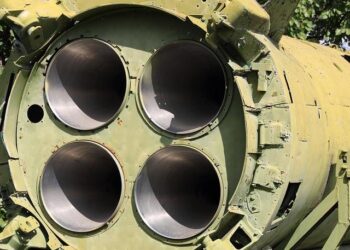Lithuania is intensifying its efforts to achieve energy independence, with the power and transport sectors identified as critical arenas for transformative action, according to the International Energy Agency (IEA). As the Baltic nation seeks to reduce its reliance on imported fossil fuels and enhance energy security, targeted reforms and investments in these key areas are poised to play a pivotal role in shaping its sustainable energy future. The IEA’s latest analysis highlights the challenges and opportunities Lithuania faces on its path toward a more resilient and self-sufficient energy system.
Power Sector Transformation Crucial for Lithuania’s Energy Sovereignty
Lithuania’s journey towards energy sovereignty hinges significantly on revamping its power sector. Transitioning from reliance on imported fossil fuels to a diversified energy portfolio is essential. Renewable energy technologies such as wind and solar, combined with grid modernization, will fortify the resilience and flexibility of Lithuania’s electricity system. Furthermore, enhancing energy storage capabilities and integrating smart grid solutions are critical steps to manage variable renewable outputs and ensure continuous supply.
The transformation also demands strategic investments and policy support to accelerate decarbonization. Key priorities include:
- Expanding offshore wind capacity along the Baltic coast
- Upgrading transmission infrastructure to connect regional markets
- Promoting energy efficiency across industrial and residential sectors
- Supporting innovation in green hydrogen production for long-term storage
| Key Aspect | Current Status | Target by 2030 |
|---|---|---|
| Renewable Share in Power | 30% | 70% |
| Grid Flexibility Measures | Minimal | Advanced Smart Grids |
| Energy Storage | Limited | 300+ MW Capacity |
Transport Industry Faces Urgent Overhaul to Reduce Fossil Fuel Dependence
Lithuania’s transport sector is at a pivotal crossroads, confronting the urgent necessity to transition away from fossil fuels. With over 90% of transport energy consumption reliant on oil products, the nation’s carbon emissions remain heavily influenced by traditional fuel sources. The shift towards electrification and alternative fuels like bioenergy and hydrogen presents promising pathways to reduce this dependence. However, substantial investments in infrastructure, such as widespread electric vehicle (EV) charging networks and modernized public transportation, are imperative to accelerate adoption.
The challenges are multifaceted, including limited availability of renewable energy sources tailored for transport and the current lack of policy incentives for sustainable mobility. Achieving energy independence hinges upon integrated strategies that align transport modernization with renewable power expansion, fostering a resilient and decarbonized system.
Key focus areas identified by the IEA for transforming Lithuania’s transport sector include:
- Electrification: Expanding EV fleets and supporting infrastructure.
- Alternative fuels: Promoting biofuels and green hydrogen for heavy-duty vehicles.
- Modal shift: Enhancing public transit and non-motorized transport options.
These efforts are complemented by regulatory reforms and public-private partnerships designed to ensure affordability and accessibility.
| Measure | Projected Impact | Timeline |
|---|---|---|
| EV Charging Stations | 600% increase in capacity | 2024-2028 |
| Biofuel Adoption | 20% fuel mix by 2030 | 2025-2030 |
| Public Transit Upgrade | 30% emission reduction | 2023-2027 |
IEA Urges Accelerated Investment in Renewable Technologies and Infrastructure
The International Energy Agency (IEA) emphasizes that Lithuania’s journey towards energy independence hinges on a rapid scale-up of renewable technology investments and modern infrastructure development. Prioritizing the power and transport sectors, the IEA highlights these areas as pivotal for integrating cleaner energy sources and reducing reliance on fossil fuels. Swift mobilization of government funding and private capital is crucial to accelerate projects such as solar and wind farms, smart grids, and electric vehicle (EV) charging networks. The agency warns that delays could jeopardize Lithuania’s ability to meet its ambitious carbon neutrality and energy security targets by 2040.
To facilitate this transformation, the IEA proposes a strategic focus on:
- Expanding renewable generation capacity with innovative technologies like offshore wind and energy storage;
- Upgrading grid infrastructure to improve resilience and accommodate fluctuating renewable outputs;
- Accelerating electric mobility through extensive EV infrastructure and incentives for adoption;
- Enhancing cross-border energy interconnections to diversify supply sources and stabilize the grid.
These priorities will not only reduce emissions but also create a more decentralized and flexible energy system tailored to Lithuania’s unique geographic and economic conditions.
| Sector | Current Renewable Share | Projected Investment by 2030 | Key Technologies |
|---|---|---|---|
| Power | 30% | ‚ā¨2.5 billion | Offshore Wind, Energy Storage |
| Transport | 12% | ‚ā¨1 billion | Electric Vehicles, Charging Networks |
The Conclusion
As Lithuania charts its path toward greater energy independence, the power and transport sectors stand out as critical focal points for immediate and sustained action. According to the International Energy Agency, targeted investments and policy measures in these areas will be essential to reducing reliance on external energy sources and enhancing national security. As the Baltic nation advances its strategic priorities, the developments within these sectors will remain closely watched by both regional and international stakeholders invested in the stability and sustainability of Europe’s energy landscape.
















